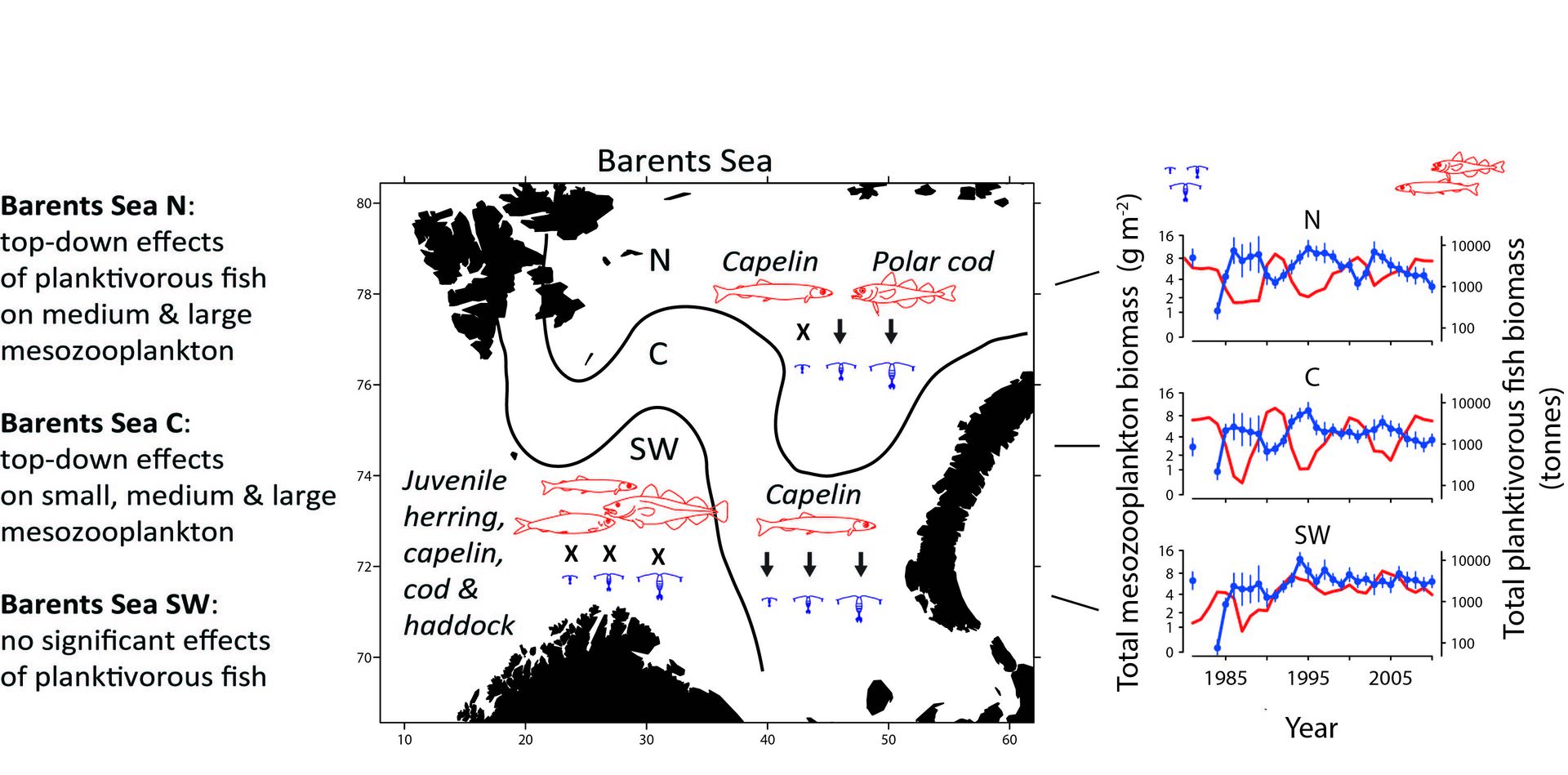Zooplankton biomass in the central and northern Barents Sea in August–October show pronounced multi-year fluctuations. We show that >50% of this variability is explainable through predation from capelin and polar cod. This suggests that the capelin and the polar cod are capable of eating down their food source in summers with high biomasses of these fishes. In the southwestern Barents Sea the fluctuations are less pronounced and uncorrelated to the total biomass of plankton-eating fish. This suggests weaker top-down control by fish in this region, characterised by higher productivity and higher diversity of the predators. We suggest that predator-driven zooplankton fluctuations may play an important role in the ecosystem dynamics of the Barents Sea and potentially other Arcto-boreal shelves.
Stige, L.C., Dalpadado, P., Orlova, E., Boulay, A., Durant, J.M., Ottersen, G., & Stenseth , N.CHr. (2014). Spatiotemporal statistical analyses reveal predator-driven zooplankton fluctuations in the Barents Sea Progress in Oceanography, 120, 243-253 DOI: 10.1016/j.pocean.2013.09.006

Log in to comment
Not UiO or Feide account?
Create a WebID account to comment